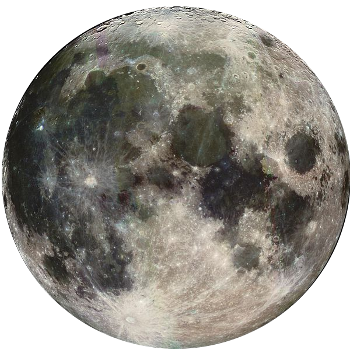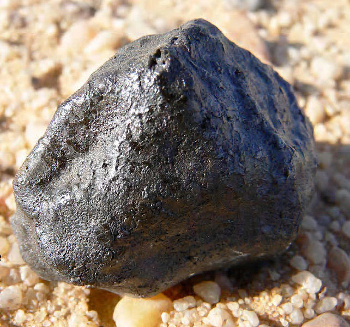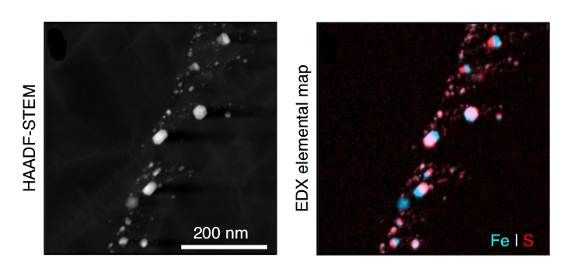Diamonds of a Lost Planet
May 21, 2018
People like a good
mystery, and that's why there have been so many
detective shows on
television. A moment's reflection tells us that TV
detectives act like
scientists, collecting and
analyzing evidence and proposing
theories to explain the facts. The shows are written such that the final exposure of the
culprit of a
crime often hinges on a seemingly obscure
observation.
In the
television series,
Columbo, the
detective played by
Peter Falk has many personal attributes typically ascribed to the
stereotypical absent-minded scientist, all of which belie his problem-solving skills. In one episode, the crucial piece of evidence was the fact that the quantity of
cigarette ash in an ashtray was not representative of what was
smoked. That's some fine detective work,
Chief!

"Watson, what's this? A four-leaf clover! Do you know what that means?
"That there's another clover there with just two leaves?"
Sherlock Holmes, the fictional private investigator of Arthur Conan Doyle, is the world's most famous detective. Holmes supposedly wrote a monograph on tobacco ashes, the likely inspiration for the Colombo episode mentioned above.
Basil Rathbone played Holmes in a series of films made between 1939 and 1946, with Nigel Bruce as Dr. Watson. Bruce played Watson as a confused and bumbling foil to Holmes.
(Illustration by Sidney Paget(1860-1908), via Wikimedia Commons
To increase their popularity, many television science shows are now written like detective shows. A "scientific mystery" is presented, evidence is collected and analyzed, scientists discuss theories that support the evidence, and a
scientific consensus is stated. This detective-themed presentation captures viewer interest, which is also enhanced by
scientific visualizations. These visualizations are a startling advance from the science
films of my
elementary school days, as
parodied in many episodes of
The Simpsons.[1-2]
Scientists, as well as detectives, are not just interested in the presence of something, but also its absence. In Doyle's 1862
The Adventure of Silver Blaze, Holmes was interested in "... the curious incident of the dog in the night-time," which was a
non-barking dog. The absence of a bark indicated that the dog was familiar with the culprit. In
astronomy, the problem of the "
missing mass" of the
universe has stimulated
research since the 1970 paper by
Vera Rubin (1928-2016) and
Kent Ford (b. 1931) on the discrepancy between
observed and
theoretical galactic rotation rates.[3]
While the
planets of our
Solar System seem to
orbit in regular, immutable paths, a concept known as the
clockwork universe, this is merely an illusion that arises from limited observations. The
Earth-Moon system was created by a
collision of an early
Mars-sized planet,
Theia, with a
proto-Earth object commonly called
Gaia about 4.5 billion years ago.

Earth's Moon, as imaged by NASA's Galileo spacecraft on December 7, 1992.
The Earth is the only planet in our Solar System to have a huge, solitary moon. As I discussed in some previous articles (Lunar Origin, November 28, 2016, and Synchronizing to the Moon, April 11, 2016), the presence of the Moon may have been important to the genesis and evolution of life on Earth.
(NASA image, via Wikimedia Commons)
Theia was just one of many
protoplanets in the early
Solar System whose fate was to either
coalesce into a larger planet, or blasted apart into
asteroids. Some of these protoplanets would have been as large as
Mercury, and they may have existed for a considerable period, replicating many
geological processes that exist on Earth. One such geological process would have been the formation of
diamond under the
high pressures existing at the protoplanetary
cores.
A team of scientists from the
École Polytechnique Fédérale de Lausanne (Lausanne, Switzerland), the
Sorbonne Paris Cité (Paris, France), the
Universität Bayreuth (Bayreuth, Germany), and the
Université de Bretagne Occidentale (Plouzané, France) have now published evidence of the existence of at least one such protoplanet in the analysis of diamonds found in fragments from the 2008 in-fall of a large
meteor in
Sudan.[4-10] Their analysis is published as an
open access article in
Nature Communications.[4]
It's conjectured that tens of such protoplanets between the size of the Moon and
Mars formed the
terrestrial planets of today's Solar System by crashing into each other and coalescing into our present planets.[4,8] This process would have happened in the first ten million years of the existence of the Solar System.[8] A 2015 examination of the diamonds found in the fragments of the 2008 Sudan meteor indicated that they were too large to have been created by
impact forces between asteroids, so they might have been created in the core of one of these lost protoplanets.[10] The present study adds credence to this
conjecture.
The
asteroid that deposited fragments in Sudan in 2008 is now known as
2008 TC3. It entered
Earth's atmosphere on October 7, 2008, and exploded 37
kilometers above the
Nubian Desert.[4] This asteroid was slightly larger than four
meters in
diameter, weighed about 80
metric tons, and it exploded into many fragments across the desert.[5,8] These fragments, 47 of which ranged in size from 1-10
centimeter and a total
mass of 4.5
kilograms, were recovered as the
Almahata Sitta meteorite.[5,8] What was unique about this meteorite is that its asteroid was tracked from discovery all the way to landfall using
telescopes, the first time that an
asteroid impact was predicted.[6,8]

Fragment of the Almahata Sitta meteorite.
This meteorite originated from the 80 metric ton asteroid 2008 TC3, which was 4.1 meters in diameter.
About 600 fragments of this meteorite with a total weight of 10.5 kilograms have been found in the Nubian Desert of Sudan.
(NASA image, via Wikimedia Commons)
The Almahata Sitta meteorite is a rare type known as an
ureilite, a class of
carbon-rich
stony meteorites that often contain clusters of
nanoscale diamonds and don't originate from the Moon or Mars.[5,8-9,10] The contained diamonds are up to 100
micrometers in size, which is at least 100 times larger than nanodiamonds that form by impact, thus the conjecture that they were produced in a protoplanetary core.[6]
The ureilite fragments consist of the
minerals,
olivine and
pyroxene.[4] The research team found that the nanodiamonds were in clusters having almost identical
crystallographic orientation, and they contained
inclusions of
chromite,
phosphate, and
(Fe,Ni)-sulfide, two things that could only happen if they were formed over an extended period under a pressure higher than 20
GPa, as inside a protoplanetary core.[4-5]
The analysis was done using
transmission electron microscopy,
electron energy-loss spectroscopy, and
energy dispersive X-ray analysis.[4] The crystallographic orientation of the diamonds was by
electron diffraction, and their morphology was studied using transmission electron microscopy.[4]
Farhang Nabiei, a study
author from the École Polytechnique Fédérale de Lausanne, is quoted in the
National Geographic as saying, "Normally we talk about telescopes [to study space]. Here we are talking about the past, so it's different. Here we use the electron microscope... It is the first time that we found inclusions in extraterrestrial diamonds."[7]

Inclusions in Almahata Sitta meteorite nanoscale diamonds. The left shows an electron micrograph, and the right is an energy dispersive X-ray element map showing iron in blue and sulfur in red. Color choice in such element maps is arbitrary, but I would have selected red for iron and yellow for sulfur. (Portion of fig. 3 of ref. 4, published under the Creative Commons Attribution 4.0 International License.)[4]
While the nanoscale diamonds could have formed at the core of a protoplanet of the size of Mercury or larger, they might also have formed just outside the core of another of Mars-size protoplanet or larger.[6] There are 480 ureilite meteorites, so there's potential for other insights into the protoplanets and early evolution of the Solar System.[7,9]
References:
- The Simpsons - A World Without Zinc, YouTube Video by jasefest, October 5, 2011.
- Lisa's class watches movies "Sand" and "The Moon of Earth" from The Simpsons: S8 E25 - "The Secret War of Lisa Simpson," YouTube Video by mrant27, June 13, 2013.
- Vera C. Rubin and W. Kent Ford, Jr., "Rotation of the Andromeda Nebula from a Spectroscopic Survey of Emission Regions," Astrophysical Journal, vol. 159 (February, 1970), pp. 379ff., DOI: 10.1086/150317.
- Farhang Nabiei, James Badro, Teresa Dennenwaldt, Emad Oveisi, Marco Cantoni, Cécile Hébert, Ahmed El Goresy, Jean-Alix Barrat & Philippe Gillet, "A large planetary body inferred from diamond inclusions in a ureilite meteorite," Nature Communications, vol. 9, Article no. 1327 (April 17, 2018), doi:10.1038/s41467-018-03808-6. This is an open access article with a PDF file here.
- Meteorite diamonds tell of a lost planet, Ecole Polytechnique Fédérale de Lausanne Press Release, April 17, 2018.
- Sid Perkins, "Diamond-studded meteorites came from the collision of a lost planet," Science, April 17, 2018, doi:10.1126/science.aat9001.
- Sarah Gibbens, "Diamonds From Outer Space Formed Inside a Long-Lost Planet," National Geographic, April 17, 2018.
- Henry Bodkin, "Sudan diamonds evidence of early planet roaming the solar system," Telegraph (UK), April 17, 2018.
- Charles Choi, "Meteoric Diamonds Are Evidence of Long Lost Planets," Astronomy, April 17, 2018.
- Ian Sample, "Diamonds in Sudan meteorite 'are remnants of lost planet'," The Guardian (UK), April 17, 2018.
Linked Keywords: People; mystery; detective fiction; detective show; television; detective; scientist; analysis; analyzing; evidence; theory; culprit; crime; observation; television series; Columbo; Peter Falk; stereotype; stereotypical; absent-minded; cigarette ash; smoking; smoked; Chief Wiggum; four-leaf clover; Sherlock Holmes; fiction; fictional; private investigator; Arthur Conan Doyle; monograph; tobacco ashes; Basil Rathbone; Sherlock Holmes (1939 film series); Nigel Bruce; Dr. Watson; foil (literature); Wikimedia Commons; scientific consensus; scientific visualization; film; elementary school; parody; The Simpsons; The Adventure of Silver Blaze; bark; dog; astronomy; dark matter; missing mass; universe; research; Vera Rubin (1928-2016); Kent Ford; observation; observe; theory; theoretical; galaxy rotation curve; galactic rotation rate; planet; Solar System; orbit; clockwork universe; origin of the Moon; collision; Mars; Theia (planet); eEarly Earth; proto-Earth; Gaia; Earth's Moon; NASA's Galileo spacecraft; Earth; natural satellite; moon; abiogenesis; evolution; organism; life; protoplanet; coalescence; coalesce; asteroid; Mercury; geology; geological; diamond; high pressure; planetary core; École Polytechnique Fédérale de Lausanne (Lausanne, Switzerland); Sorbonne Paris Cité (Paris, France); Universität Bayreuth (Bayreuth, Germany); Université de Bretagne Occidentale (Plouzané, France); meteorite; meteor; Sudan; open-access journal; open access article; Nature Communications; Mars; terrestrial planet; impact force; scientific theory; conjecture; asteroid; 2008 TC3; Earth's atmosphere; kilometer; Nubian Desert; meter; diameter; metric ton; centimeter; mass; kilogram; Almahata Sitta meteorite; telescope; impact event; asteroid impact; weight; NASA; ureilite; carbon; rock (geology); stony; nanoscopic scale; nanoscale; micrometer; mineral; olivine; pyroxene; Miller index; crystallographic orientation; inclusion (mineral); chromite; phosphate; pyrite; (Fe,Ni)-sulfide; pascal (unit); GPa; transmission electron microscopy; electron energy-loss spectroscopy; energy dispersive X-ray analysis; electron diffraction; Farhang Nabiei; author; National Geographic; chemical element; iron; sulfur;Creative Commons Attribution 4.0 International License.